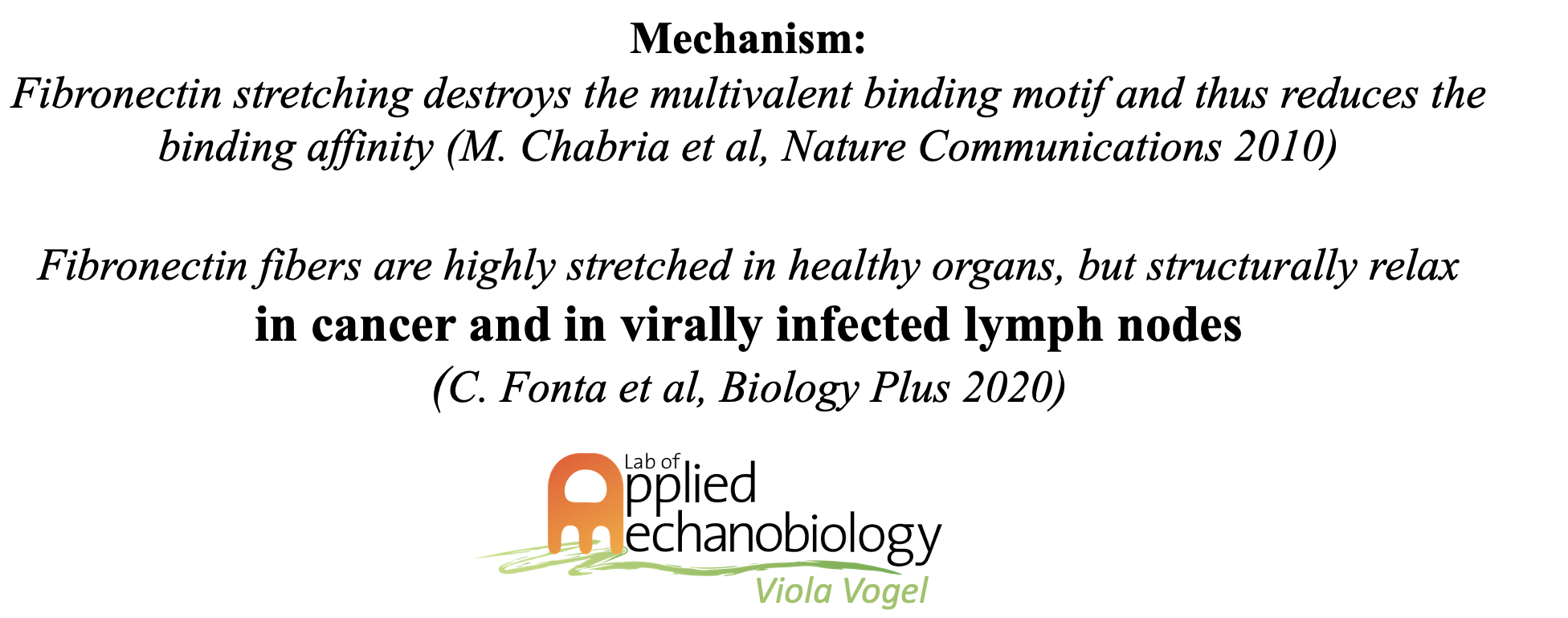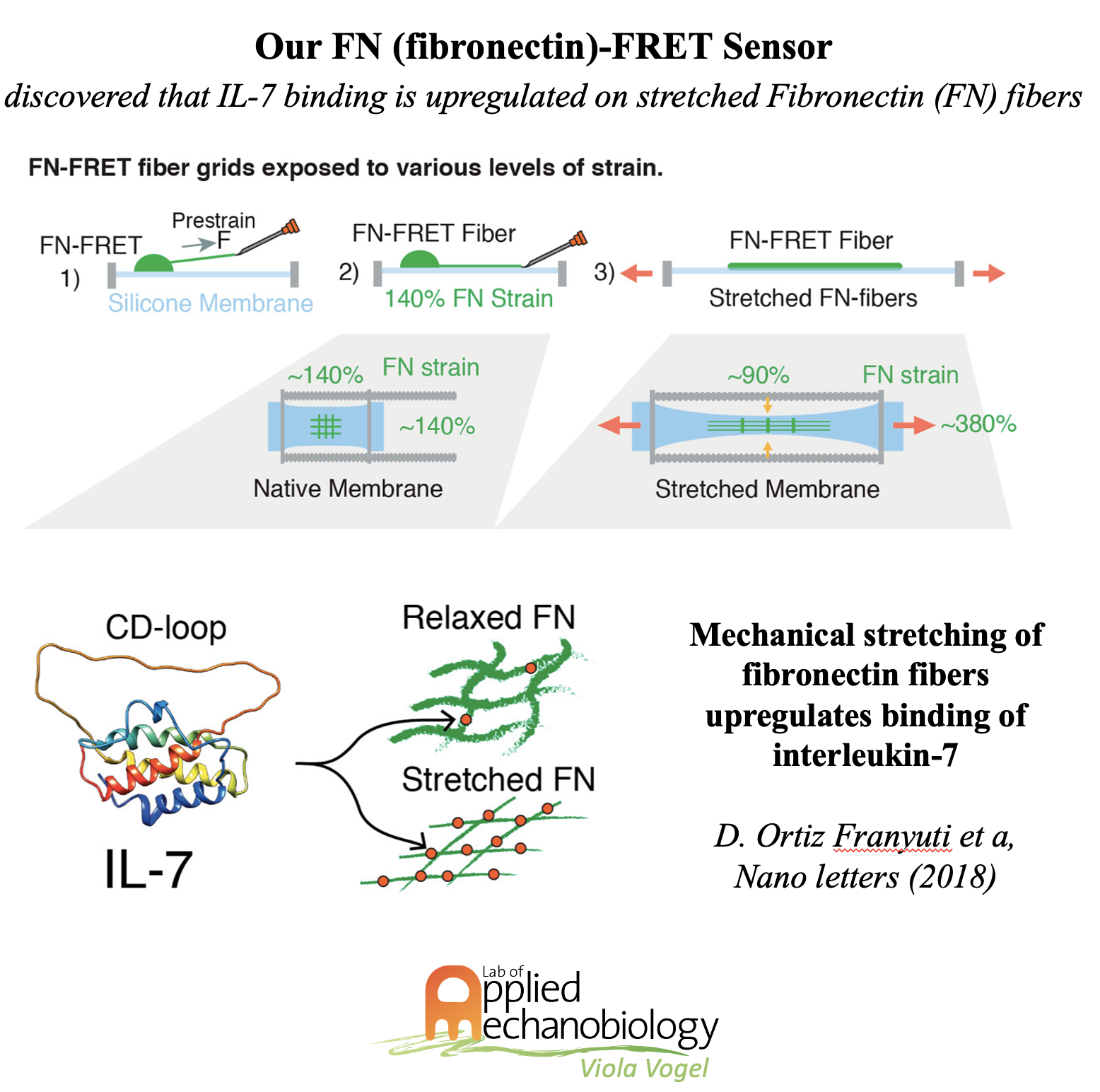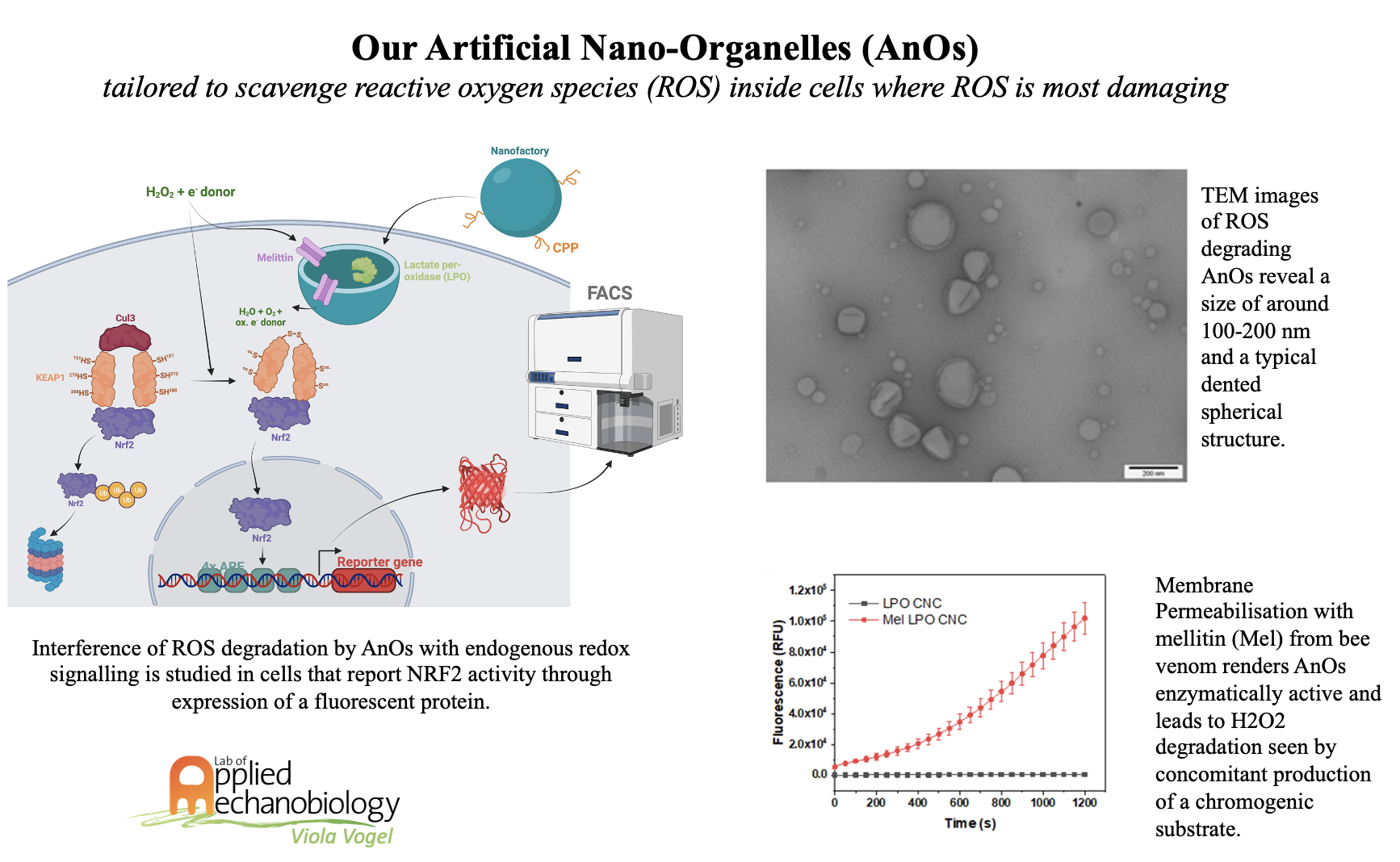Probe and Sensor Developments
Mechanobiology is a rapidly growing field, but its clinical impact so far has been limited. Translating what has been learned in mechanobiology mostly at the single cell level to real organs, and finally to the clinic, is thereby hampered by various challenges, which includes the lack of nanoscale sensors to probe forces or tissue fiber tensions in healthy versus diseased organs, as well as the local metabolic activity of cells. To bring our knowledge to the patient, we developed a nanosensor to visualize the tensional states of ECM fibers in animal models and in human tissues, we have started to map the tension of tissue fibers and found that it is modulated significantly in diseased extracellular matrix resulting in many unexpected findings that were not anticipated from 2D cell culture studies.
1) Fibronectin-FRET sensor, particularly well-suited to probe fibronectin fiber tension in cell culture.
Selected papers:
- external pageBaneyx, G., Baugh, L., & Vogel, V. (2001). Coexisting conformations of fibronectin in cell culture imaged using fluorescence resonance energy transfer. Proceedings of the National Academy of Sciences, 98(25), 14464-14468.call_made
- external pageBaneyx, G., Baugh, L., & Vogel, V. (2002). Fibronectin extension and unfolding within cell matrix fibrils controlled by cytoskeletal tension. Proceedings of the National Academy of Sciences, 99(8), 5139-5143.call_made
- external pageSmith, M. L., Gourdon, D., Little, W. C., Kubow, K. E., Eguiluz, R. A., Luna-Morris, S., & Vogel, V. (2007). Force-induced unfolding of fibronectin in the extracellular matrix of living cells. PLoS biology, 5(10), e268.call_made
- external pageLittle, W. C., Smith, M. L., Ebneter, U., & Vogel, V. (2008). Assay to mechanically tune and optically probe fibrillar fibronectin conformations from fully relaxed to breakage. Matrix biology, 27(5), 451-461.call_made
- external pageOrtiz Franyuti, D., Mitsi, M., & Vogel, V. (2018). Mechanical stretching of fibronectin fibers upregulates binding of interleukin-7. Nano letters, 18(1), 15-25.call_made
2) FnBPA5 Peptide sensor to probe fibronectin fiber tension at the organ level in vitro and in vivo


Selected papers:
- external pageChabria, M., Hertig, S., Smith, M. L., & Vogel, V. (2010). Stretching fibronectin fibres disrupts binding of bacterial adhesins by physically destroying an epitope. Nature Communications, 1(9), 135–139call_made
- external pageArnoldini, S., Moscaroli, A., Chabria, M., Hilbert, M., Hertig, S., Schibli, R., Béhé M. & Vogel, V. (2017). Novel peptide probes to assess the tensional state of fibronectin fibers in cancer. Nature Communications, 8(1), 1793.call_made


